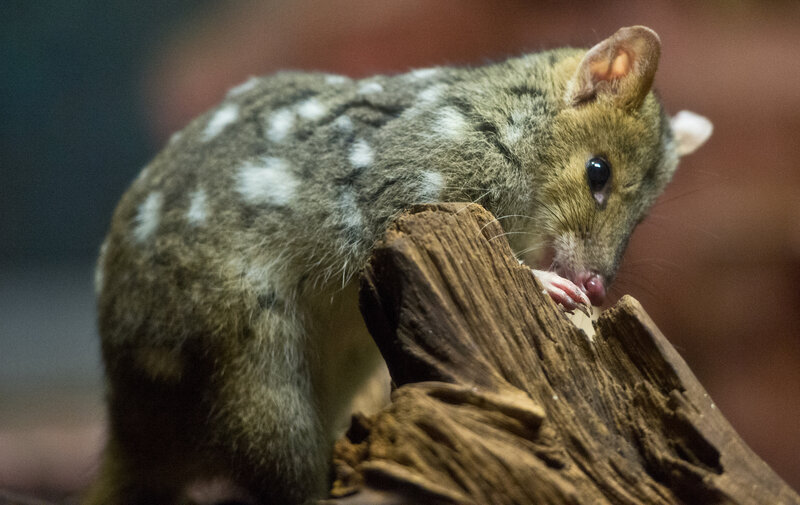Successful mapping raises hope of reintroducing eastern quoll to mainland Australia

The first-ever genome sequence for the eastern quoll, one of Australia’s last living carnivorous marsupials, has been completed by a joint research team led by the University of Melbourne.
Mapping the order of the chemical building blocks of the quoll’s DNA will allow the team to learn new information about its genetics, and provide invaluable insights on efforts to reintroduce the quoll from Tasmania to mainland Australia.
“This new resource really begins a new phase of conservation management for the quoll,” said Dr Charles Feigin, an Honorary from the School of BioSciences at the University of Melbourne.
“It also means we can begin to uncover the history of eastern quolls in Australia, prior to the arrival of European settlers,” said Dr Feigin, who is completing his Postdoctoral studies at Princeton University.
The quoll was once common in Australia and has a history going back 15 million years but a combination of threats including disease and feral predators led to its decline. It was declared extinct on the mainland last century.
Long overshadowed by its better-known cousins the Tasmanian Devil and the extinct Tasmanian Tiger (the thylacine), the eastern quoll has managed to survive in Tasmania, where it adapted to the cold.
Scientists now hope the same ability that allowed the quoll to survive in Tasmania can also help it re-establish in places like Booderee National Park in New South Wales, where reintroduction efforts are already underway.
Fellow researcher Dr Natasha Robinson, from the Australian National University, said successfully mapping the quoll’s DNA will help with the trials.
“This high-quality reference genome will guide improved genetic management of the species, and help with identifying important genetic traits to guide our reintroduction efforts on the mainland,” said Dr Robinson who has been involved in the Booderee reintroduction program.
The research team now plan to perform population-level surveys of eastern quolls in the wild in Tasmania and in captive breeding colonies to better manage genetic diversity in this species.
More information on the genome sequencing can be found at NCBI, via the bioproject number: PRJNA758704.